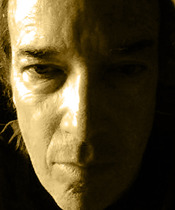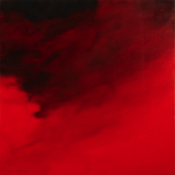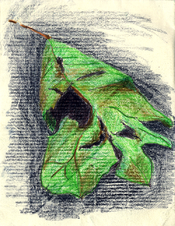Sunset, Saturday, 29 August 2009 / Notes from Pittsburgh, Part 3
 William Theodore Van Doren. Neville Island, Pittsburgh, Pa. Oil on paper, 16 x 20.
William Theodore Van Doren. Neville Island, Pittsburgh, Pa. Oil on paper, 16 x 20.
One of the best parts of our trip to Pittsburgh was going through the Andy Warhol Museum, where we spent about four solid hours. One of the best designed, most intelligently curated museums I’ve ever seen. Whether you love Warhol, or feel just lukewarm about him, or think you hate his stuff or just don’t get it – doesn’t matter, I think. Naturally this can’t be true for everyone, but I think almost anyone would come out of the museum enjoying and appreciating the man and his work.
It was a blast.
One thing I think I finally understood was how Warhol’s aesthetic could be at one and the same time absolutely rigorous and in a sense promiscuous. The peculiar unity of those elements made him a great image-monger and image-maker; for him mongering and creating became one thing. As much as he could create original personal imagery, and he could, he used that great natural talent to recognize and respond to the imagery of society, and so created not simply images but icons.
And there you have an aesthetically naive, backward writer sounding as if he’s just discovered something really new. But for me it was, so there you go.
Along similar lines, I’d love to rave about the beauty of Pittsburgh, and especially the bridges, but here again I think it’s been done many times before. Nevertheless, I’ll say it: I can hardly believe how beautiful the bridges are. And to have one named for Roberto Clemente (The Great One), next to another named for Andy Warhol, next to another named for Rachel Carson – all three of splendid design – is really almost too good.
 Sunday, August 30, 2009 at 05:25PM | by
Sunday, August 30, 2009 at 05:25PM | by  BVD | in
BVD | in  Sunset Paintings | tagged
Sunset Paintings | tagged  Andy Warhol,
Andy Warhol,  Andy Warhol Museum,
Andy Warhol Museum,  Neville Island,
Neville Island,  Pittsburgh,
Pittsburgh,  Rachel Carson,
Rachel Carson,  Roberto Clemente,
Roberto Clemente,  aesthetics | | Comments Off
aesthetics | | Comments Off 





